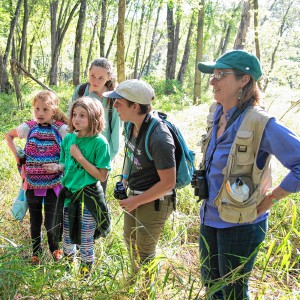Beacons of Freedom
| Published: 04-08-2016 10:00 PM |
There are few eras in American history as shrouded in myth as the Underground Railroad, with its imagery of whites and blacks together forging a path to free African-Americans from slavery, women and men crossing rivers chased by baying hounds, or following the North Star to Canada.
But what is folkore, and what is historical reality?
Distinguishing between the two was one of the main tasks confronting Michelle Arnosky Sherburne, author of the recently published Slavery and the Underground Railroad in New Hampshire (The History Press), the follow-up to her previous book on the Underground Railroad in Vermont.
Researching the subject was a lengthy and sometimes frustrating process, Sherburne said.
Documentation is sporadic, oral history passed down over the generations is not necessarily reliable, and there has been a tendency in New England to romanticize and exaggerate the presence of the Underground Railroad in rural towns and villages.
Sherburne, who lives in Newbury, Vt., and works for the Bradford Journal-Opinion as an advertising and marketing manager, has long been passionate about the history of the Civil War since.
She has also written a book on the St. Albans Raid, an attempt by Confederate soldiers to rob a bank in St. Albans, Vt., just 15 miles from the Canadian border, to both fund their cause and sow confusion and fear.
Slavery and the Underground Railroad in New Hampshire offers a town-by-town guide to the people and locations that played a role in the struggle to eliminate slavery, and bring refugee slaves into free territory.
Article continues after...
Yesterday's Most Read Articles
She writes about the places in New Hampshire, such as Portsmouth, that, profited from the slave trade for decades. And she has brought together stories of the African-American freemen and women who settled in New Hampshire.
But unlocking these stories requires persistence, and some luck.
“Finding proof of Underground Railroad stations is tough,” Sherburne said in an interview at the future home of the Lyme Historical Society, a house that sits near the town green. She’d come to Lyme to show some sites in town, along Route 10, that were associated with the Underground Railroad.
Because of its location on the Connecticut River, Lyme is notable, Sherburne said.
A handful of prominent citizens in town were abolitionists and some were also agents who were responsible for moving fugitive slaves arriving from such towns as Charlestown and Canaan either across the river to Thetford, or up the Grafton Turnpike to Haverhill. (It was possible to hold abolitionist views without ever committing oneself physically to the act of hiding or transporting African-Americans, Sherburne said.)
The object was to help African-Americans find their way to Canada, or to more isolated rural areas of New England where, freed from slavery although not necessarily prejudice, they could take up residence and perhaps form communities.
To piece together the history of the Underground Railroad in such New Hampshire towns as Lyme, Sherburne read town histories, visited historical societies and looked at who lived where, who their friends were and whether they were known to be in anti-slavery circles or to subscribe to abolitionist newspapers.
“It’s all about connections,” Sherburne said.
One of the documents she found in the Lyme Historical Society was an 1840 list of Lyme Anti-Slavery Subscriptions, which showed the names of more than 35 residents pledging money into the treasury of the New Hampshire Abolition Society.
There is also an account from a woman, whose father-in-law was in the Lyme network, of how escapees were hidden in wagons under hay and transported north.
That story made its way into the collection of Wilbur Siebert, the first historian to write, at the end of the 19th century, a comprehensive history of the Underground Railroad. Siebert collected oral histories and written testimonies from people who had been involved, or from their children and grand-children.
But, of course, some of those testimonies were unreliable. Memory is faulty and humans often exaggerate their own heroism, or blamelessness, after the fact.
And the reputation of New England as a safe haven for people fleeing Southern slavery is more mixed than the burnishing of the North’s record as a beacon of liberty has led many to believe.
In a phone interview, Robert Bonner, a professor of American history at Dartmouth College specializing in the antebellum and Civil War period, referred to the writer Robert Penn Warren’s pithy characterization of how the Union and Confederacy quite rapidly constructed their post-war narratives of victimhood versus noble victory.
In The Legacy of the Civil War, published in 1961 to mark the war’s centenary, Warren called the South’s reflexive defense of their cause the “Great Alibi,” a convenient shorthand for assigning blame for the war and its turbulent aftermath on the Yankees — on everything, in short, but the region’s reliance on slavery as the dominant commercial and social institution that propped up their society.
But the North fell back on what Warren called the “Treasury of Virtue,” a complacent accounting that overlooked how divisive slavery and abolitionism were in the northern states: “an indulgence, for all sins past, present, and future, freely given by the hand of history,” Warren wrote.
New Hampshire, Bonner said, was “quite a bit more inclined to side with the South,” Bonner said. Franklin Pierce, the only president to come from New Hampshire, was “very friendly with Southern interests,” Bonner said.
Pierce, who served just one term, from 1853 through 1857, and is ranked near the bottom of American presidents, called for strict enforcement of the Fugitive Slave Act of 1850, the draconian law that called for any escaped slave to be returned to the owner, regardless of whether the escapee was in states or territories where slavery had been abolished, or never established.
In a bounty system, anyone who turned in or apprehended a slave would be paid. Although New England was largely hostile to the Fugitive Slave Act, there were always exceptions and pockets of resistance to the abolition movement.
Sherburne found these contradictions in her research. Vermont and New Hampshire were not universally abolitionist, and abolitionists who came to a town to rally people to the great cause often met with hostile and even violent reaction, she said. In Lyme, she said, the rhetoric for and against abolitionism “almost tore the Congregational Church apart.”
Sherburne is one of a growing number of independent and professional historians who are taking another look at the Underground Railroad.
If Siebert represents one end of the spectrum, the 1960s historian Larry Gara, who in his book The Liberty Line, debunked almost all the dearly-held myths of Underground Railroad folklore, is at the other end, Bonner said.
From the 1960s on, the rap on the Underground Railroad was that it was just a mechanism for whites to make themselves feel better about their record on slavery, one that denied the agency of the African-Americans who bore the major burden of risk in leaving slavery, and many of whom died in the attempt.
Now, with such historians as Eric Foner, one of the foremost historians of the Civil War, turning up more evidence of organized networks, at least in New York City, “there has been a revision of the revision,” Bonner said.
Maybe there weren’t schedules and highly-coordinated activities out in rural areas, Bonner said, but there could be a grapevine of information.
Sherburne has found evidence of both networks and more irregular or individual activity.
As Sherburne gives presentations of the book locally, she is finding that people who have heard her speak are emailing her more information or clues about ancestors who may have been active in the Underground Railroad.
Her job is to sift through the record to see what holds up, and what doesn’t. Stitching together snippets of information may lead to a verifiable fact, and a chain of facts begins to fill in an incomplete record.
“History is always revealing itself,” Sherburne said.
Michelle Arnosky Sherburne will give a presentation on the Underground Railroad in New Hampshire at the annual meeting of The Lyme Historians on Sunday, April 24, at 3 p.m. The talk is open to the public and free-of-charge. It will take place at Lyme Center Academy, 53 Dorchester Road.
She will also give a talk on the St. Albans Raid from 6:30 to 8 p.m. on Thursday, May 26 at the Lyme School.
Nicola Smith can be reached at nsmith@vnews.com.

 How a hurricane and a cardinal launched a UVM professor on a new career path
How a hurricane and a cardinal launched a UVM professor on a new career path Out & About: Vermont Center for Ecostudies continues Backyard Tick Project
Out & About: Vermont Center for Ecostudies continues Backyard Tick Project Art Notes: After losing primary venues, JAG Productions persists
Art Notes: After losing primary venues, JAG Productions persists  Over Easy: Marvels in the heavens, and in the yard
Over Easy: Marvels in the heavens, and in the yard 
